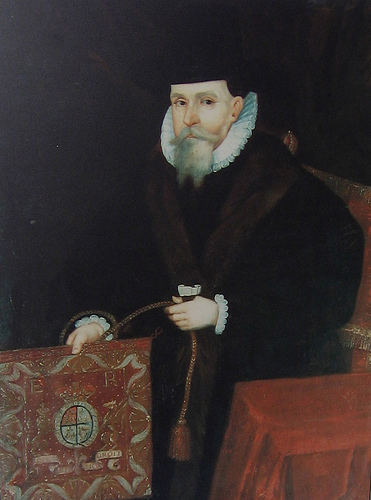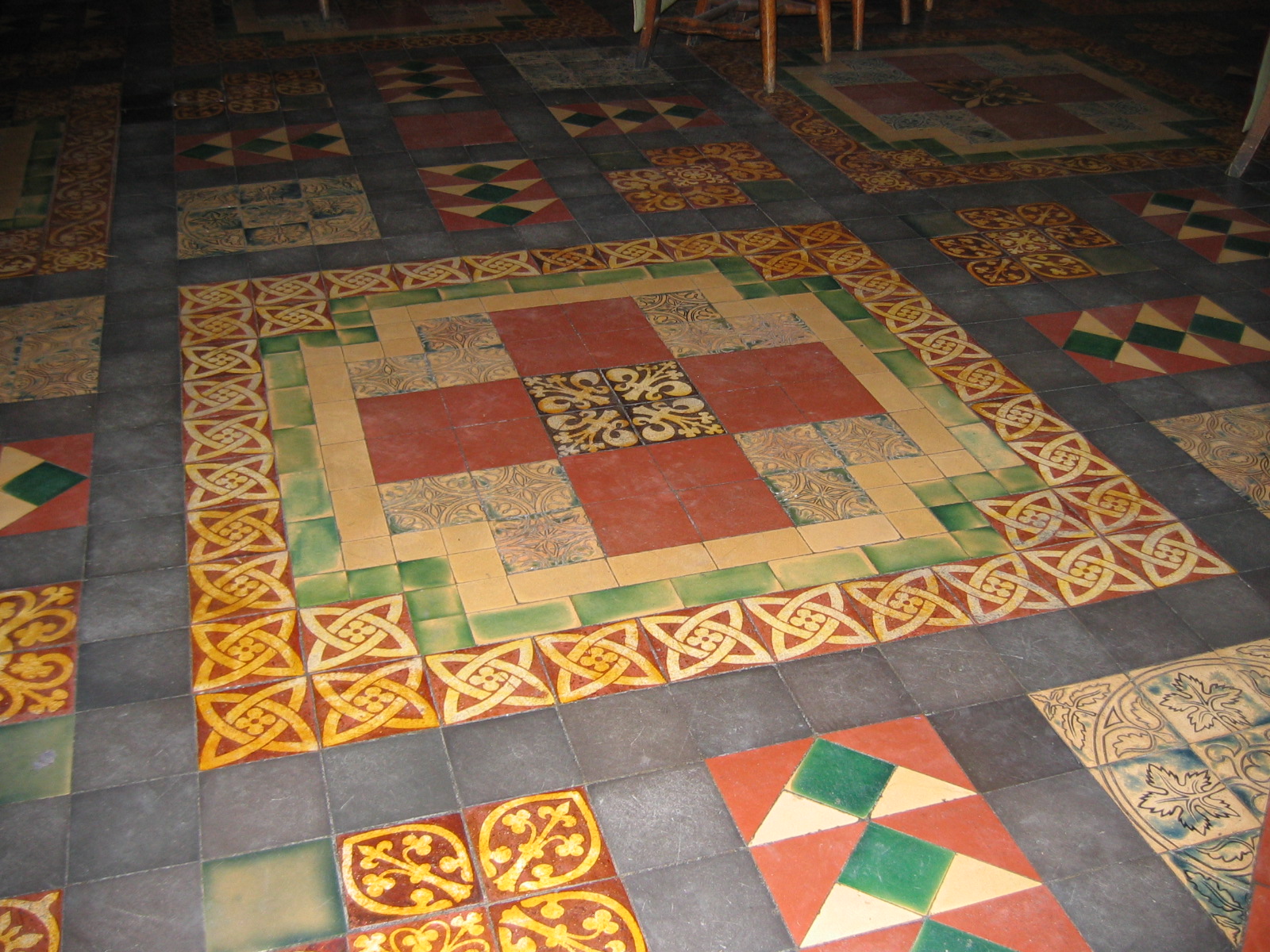|
John Parker (archbishop)
John Parker (died 28 December 1681) was a Church of Ireland clergyman who came to prominence after the English Restoration, first as Bishop of Elphin, then as Archbishop of Tuam and finally as Archbishop of Dublin and Primate of Ireland. Early life Born in Dublin, Parker was the son of another Rev. John Parker (died 1643), also a Church of Ireland clergyman, dean of Leighlin (1618–37) and then of Killaloe, County Clare until his death. A John Parker is recorded as a scholar at Trinity College Dublin, in 1636. Gilbert, J. T., rev. by Jason McElligott, 'Parker, John (died 1681), Church of Ireland archbishop of Dublin' in ''Oxford Dictionary of National Biography'' (OUP, 2004) Career Parker was ordained a deacon in 1638 and in 1642 became a minor canon of St Patrick's Cathedral, Dublin. He was prebendary of Rathangan, in the diocese of Kildare, and in 1643 prebendary of Maynooth at St Patrick's and of St Michan's at Christ Church Cathedral, Dublin, both benefices previously ... [...More Info...] [...Related Items...] OR: [Wikipedia] [Google] [Baidu] |
Archbishop Of Dublin
The Archbishop of Dublin () is an Episcopal polity, archiepiscopal title which takes its name from Dublin, Republic of Ireland, Ireland. Since the Reformation in Ireland, Reformation, there have been parallel apostolic successions to the title: one in the Catholic Church and the other in the Church of Ireland. The archbishop of each Christian denomination, denomination also holds the title of Primacy of Ireland, Primate of Ireland. History The Roman Catholic Archdiocese of Dublin, diocese of Dublin was formally established by Sigtrygg Silkbeard, Sigtrygg (Sitric) Silkbeard, Kings of Dublin, King of Dublin in 1028, . ''Diocese of Dublin and Glendalough''. Retrieved on 31 March 2010. and the first bishop, Donat, Bishop of Dublin, Dúnán, was consecrated in about the same year. The diocese of Dublin was subject to the Province of ... [...More Info...] [...Related Items...] OR: [Wikipedia] [Google] [Baidu] |
Archbishop Of Dublin (Church Of Ireland)
The Archbishop of Dublin is a senior bishop in the Church of Ireland, second only to the Archbishop of Armagh (Church of Ireland), Archbishop of Armagh. The archbishop is the diocesan bishop of the Diocese of Dublin and Glendalough, United Dioceses of Dublin and Glendalough and the metropolitan bishop of the Province of Dublin (Church of Ireland), Province of Dublin, which covers the southern half of Ireland, and he is styled ''primate (bishop), Primate of Ireland'' (the Archbishop of Armagh is the "Primate of All Ireland"). The archbishop's throne (''cathedra'') is in Christchurch Cathedral, Dublin, Christ Church Cathedral in central Dublin. The incumbent, from 11 May 2011, is Michael Jackson (bishop), Michael Jackson who signs as ''+Michael DUBLIN''. History The Dublin area was Christian long before Dublin had a distinct diocese. The remains and memory of monasteries famous before that time, at Finglas, Glasnevin, Glendalough, Kilnamanagh, Rathmichael, Swords, County Dubli ... [...More Info...] [...Related Items...] OR: [Wikipedia] [Google] [Baidu] |
Irish Confederate Wars
The Irish Confederate Wars, took place from 1641 to 1653. It was the Irish theatre of the Wars of the Three Kingdoms, a series of civil wars in Kingdom of Ireland, Ireland, Kingdom of England, England and Kingdom of Scotland, Scotland, all then ruled by Charles I of England, Charles I. The conflict caused an estimated 200,000 deaths from fighting, as well as war-related famine and disease. It began with the Irish Rebellion of 1641, when local Catholics tried to seize control of the Dublin Castle administration. They wanted an end to anti-Catholic discrimination, to increase Irish self-governance, and to roll back the Plantations of Ireland. They also wanted to prevent an invasion by anti-Catholic Roundhead, English Parliamentarians and Covenanter, Scottish Covenanters, who were defying the king. Rebel leader Felim O'Neill of Kinard, Felim O'Neill claimed to be Proclamation of Dungannon, doing the king's bidding, but Charles condemned the rebellion after it broke out. The rebellio ... [...More Info...] [...Related Items...] OR: [Wikipedia] [Google] [Baidu] |
Dean Of Killaloe And Clonfert
The Dean of Killaloe is based at the Cathedral Church of St Flannan in Killaloe in the united diocese of Limerick, Killaloe and Ardfert within the Church of Ireland. The Dean of Killaloe is also Dean of St Brendans, Clonfert, Dean of Kilfenora, and both Dean and Provost of Kilmacduagh. Since 2020 the incumbent is Roderick Lindsay Smyth. Deans of Killaloe *1602–1624 Hugh O'Hogan *1624–>1627 Richard Hacket *1628 Alexander Spicer *1637–1643 John Parker *1643–1649 John Parker (son of above, deprived 1649 but later appointed Bishop of Elphin, 1660) *''Interregnum'' *1661 Jasper Pheasant *1692–1699 Jerome Ryves (afterwards Dean of St Patrick's Cathedral, 1699) *1699–1727 James Abbadie (also known as Jakob Abbadie, writer) *1727–1749 Giles Eyre *1750–1761 Hon Charles Talbot Blayney, 8th Baron Blayney *1761–1768 William Henry *1768–1772 Hon Joseph Deane Bourke (afterwards Dean of Dromore, 1772 and later Bishop of Ferns and Leighlin) *1772–1780 W ... [...More Info...] [...Related Items...] OR: [Wikipedia] [Google] [Baidu] |
Benefice
A benefice () or living is a reward received in exchange for services rendered and as a retainer for future services. The Roman Empire used the Latin term as a benefit to an individual from the Empire for services rendered. Its use was adopted by the Western Church in the Carolingian era as a benefit bestowed by the crown or church officials. A benefice specifically from a church is called a precaria (pl. ''precariae''), such as a stipend, and one from a monarch or nobleman is usually called a fief. A benefice is distinct from an allod, in that an allod is property owned outright, not bestowed by a higher authority. Catholic Church Roman imperial origins In ancient Rome a ''benefice'' was a gift of land ( precaria) for life as a reward for services rendered, originally, to the state. The word comes from the Latin noun ''beneficium'', meaning "benefit". Carolingian era In the 8th century, using their position as Mayor of the Palace, Charles Martel, Carloman I and Pepin ... [...More Info...] [...Related Items...] OR: [Wikipedia] [Google] [Baidu] |
Maynooth
Maynooth (; ) is a university town in north County Kildare, Ireland. It is home to Maynooth University (part of the National University of Ireland and also known as the National University of Ireland, Maynooth) and St Patrick's College, Maynooth, St Patrick's College, a Pontifical University and Ireland's sole Roman Catholic seminary. Maynooth is also the seat of the Irish Catholic Bishops' Conference and holds the headquarters of Ireland's largest development charity, Trócaire. Maynooth is located 24 kilometres (15 miles) west of central Dublin. Location and access Maynooth is located on the Roads in Ireland, R148 road between Leixlip and Kilcock, with the M4 motorway (Republic of Ireland), M4 motorway bypassing the town. Other roads connect the town to Celbridge, Clane, and Dunboyne. Maynooth is also on the Dublin-Sligo railway line and is served by the Commuter (Iarnród Éireann), Commuter and InterCity (Iarnród Éireann), InterCity train services. Etymology Maynooth com ... [...More Info...] [...Related Items...] OR: [Wikipedia] [Google] [Baidu] |
Roman Catholic Diocese Of Kildare And Leighlin
The Diocese of Kildare and Leighlin (; ; ) is a Latin Church diocese of the Catholic Church in eastern Ireland. It is one of three suffragan dioceses in the ecclesiastical province of Dublin and is subject to the Archdiocese of Dublin.Diocese of Kildare and Leighlin ''Catholic-Hierarchy''. Retrieved 2 June 2011. On 7 May 2013, Denis Nulty was appointed bishop of the diocese. Geographic remit The united diocese includes virtually all of , most of |
Rathangan, County Kildare
Rathangan (; ) is a town in the west of County Kildare, Republic of Ireland, Ireland. , the population was 3,263. It is located from the centre of Dublin, and from Kildare, at the intersection of the R401 road (Ireland), R401, R414 road, R414, and R419 road, R419 Regional road (Ireland), regional roads. The Slate River (Ireland), Slate River and the Grand Canal of Ireland, Grand Canal run through the town. The town is in a townland and Civil parishes in Ireland, civil parish of the same name. Rathangan is situated beside the Bog of Allen, and is in close proximity to the lowlands of the Curragh. History The Ringfort, rath or fort of ''Iomghain'', from which the town gets its name, has been dated to between 600 and 700 AD, and is situated to the northwest of the modern town on the Clonbulloge road. Several Iomghains are documented in the history of this period and it is unclear who the fort is actually named for. Richard FitzGerald, 3rd Earl of Kildare died in Rathangan in ... [...More Info...] [...Related Items...] OR: [Wikipedia] [Google] [Baidu] |
Prebendary
A prebendary is a member of the Catholic Church, Catholic or Anglicanism , Anglican clergy, a form of canon (priest) , canon with a role in the administration of a cathedral or collegiate church. When attending services, prebendaries sit in particular seats, usually at the back of the Choir (architecture) , choir stalls, known as prebendal stalls. History At the time of the Domesday Book in 1086, the Canon (priest), canons and Ecclesiastical dignitary, dignitaries of the cathedrals of Kingdom of England, England were supported by the produce and other profits from the cathedral estates.. In the early 12th century, the endowed prebend was developed as an institution, in possession of which a cathedral official had a fixed and independent income. This made the cathedral canons independent of the bishop, and created posts that attracted the younger sons of the nobility. Part of the endowment was retained in a common fund, known in Latin as ''communia'', which was used to provide br ... [...More Info...] [...Related Items...] OR: [Wikipedia] [Google] [Baidu] |
St Patrick's Cathedral, Dublin
Saint Patrick's Cathedral () in Dublin, Ireland is the national cathedral of the Church of Ireland. Christ Church Cathedral, Dublin, Christ Church Cathedral, also a Church of Ireland cathedral in Dublin, is designated as the local cathedral of the Diocese of Dublin and Glendalough. Background Unusually, St Patrick's is not the cathedra, seat of a bishop, as the Archbishop of Dublin (Church of Ireland), Archbishop of Dublin has his seat in Christchurch Cathedral, Dublin, Christ Church Cathedral. Since 1870, the Church of Ireland has designated St Patrick's as the national cathedral for the whole of Ireland, drawing chapter members from each of the 12 List of Church of Ireland dioceses, dioceses of the Church of Ireland. The Dean of St. Patrick's Cathedral, Dublin, dean is the Ordinary (officer), ordinary for the cathedral; this office has existed since 1219. The most famous office holder was Jonathan Swift. Status Some believe it was intended that St Patrick's, a secular (di ... [...More Info...] [...Related Items...] OR: [Wikipedia] [Google] [Baidu] |
Deacon
A deacon is a member of the diaconate, an office in Christian churches that is generally associated with service of some kind, but which varies among theological and denominational traditions. Major Christian denominations, such as the Catholic Church, the Oriental Orthodox Churches, the Eastern Orthodox Church, Lutheranism, Presbyterianism, Methodism, and Anglicanism, view the diaconate as an order of ministry. Permanent deacons (or distinctive deacons) are those who do not later transition to another form of ministry, in contrast to those continuing their formation who are then often called transitional deacons. Origin and development The word ''deacon'' is derived from the Greek word (), which is a standard ancient Greek word meaning "servant", "waiter", "minister", or "messenger". Recent research has highlighted the role of the deacon "as a co-operator" and "go-between," emphasizing their intermediary position in early Christian communities. It is generally assum ... [...More Info...] [...Related Items...] OR: [Wikipedia] [Google] [Baidu] |








